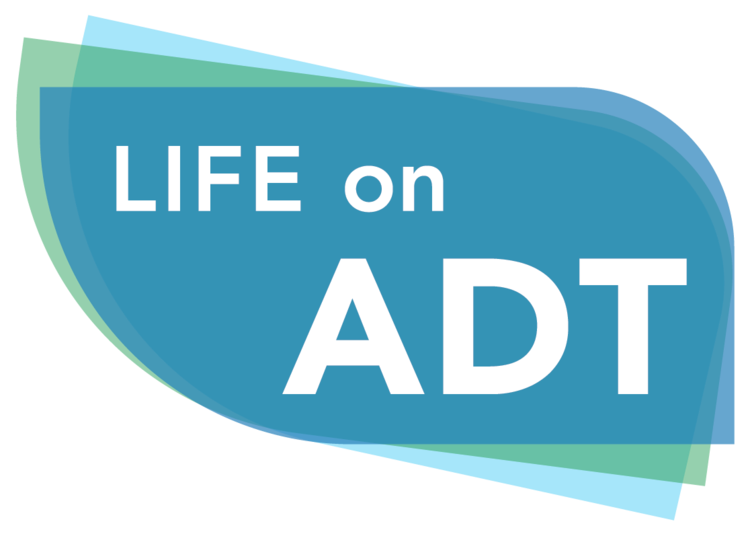It is standard care to offer ADT to prostate cancer (PCa) patients experiencing a rising PSA after localizing prostate cancer with curative intent. Because of the many side effects of ADT, patients in consult with their oncologist need to consider not just their risk of dying from prostate cancer, but their overall health and quality of life in deciding to start on ADT.
Once they elect to go on ADT, many patients want to know how long they need to stay on that treatment. Here the decision gets more complicated, for patients are increasingly advised that for cancer control they would do better on not just basic ADT, but on an intensified ADT protocol. Those are ones where other treatments are added in, such as chemotherapy and/or an ARTA (e.g., drugs like Xtandi, Erleada or Zytiga).
Many patients on ADT are so bothered by the side effects of basic ADT that they seek intermittent therapy where they take a vacation from ADT and cycle on and off it. Indeed, several studies have shown that many patients can have comparably long-term cancer control on intermittent ADT as good as on continuous ADT. For more advanced patients, however, such intermittent treatment may not be the best strategy and intensified ADT protocols may be a better way to go.
In terms of the options, the literature can sound conflicting. For example, a recent review and meta-analysis of intermittent versus continuous ADT by Becker et al. (2023) concluded that intermittent ADT is “less likely to yield adverse side effects [and that] future treatment guidelines should consider these advantages over continuous androgen deprivation therapy.”
In contrast, a series of papers in the last six months in prestigious journals like Lancet Oncology, Journal of Clinical Oncology (example citations below) support ADT intensification.
So, what is the better way to go? Take a vacation or intensification?
To be clear, adding additional drugs to ADT, does not reduce the side effects burden. Instead, it often increases the intensity of the ADT side effects and can add in new side effects. So, as noted above, the patient’s overall health and quality of life need to be taken into consideration when on ADT. With a broad range of options—from intermittent to intensified ADT—it become increasingly important that patients on ADT monitor not just their PSA, but other measures of their health, such as their energy levels and diabetic risk.
What has been surprisingly missing in the studies that have shown a benefit to intermittent therapy, is the impact of intermittent therapy on not just the patient, but also their partners. We have known for decades that the side effects of ADT on patients can indirectly lower the quality of life of the partners of patients. What we have not seen is studies of the how the partners of PCa patients, who cycling on and off ADT, are doing with each cycle. Do they also benefit? We just don’t know.
With PCa patients living longer with ADT—and with the broadened range of ADT treatment options—it is time to not just study the impact of the various treatment protocols on the patients, but also on their intimate partners.
References:
Becker, B., Stroever, S., Reddy, A., & de Riese, W. T. W. (2023). Comparison of Intermittent and Continuous Androgen Deprivation Therapy in Prostate Cancer Patients: An Up-to-Date Meta-analysis for Urologists and Medical Providers. Urology practice, 10(5), 424–434. https://doi.org/10.1097/UPJ.0000000000000424
Sayyid R & Z. Klaassen (2023) Prostate Radiotherapy for De Novo, Low Volume Metastatic Hormone Sensitive Prostate Cancer: Is There Benefit? UroToday
Jeremiah Wala, Paul Nguyen, and Mark Pomerantz (2023) Early Treatment Intensification in Metastatic Hormone-Sensitive Prostate Cancer Journal of Clinical Oncology 2023 41:20, 3584-3590.
Vale, C. L., Fisher, D. J., Godolphin, P. J., Rydzewska, L. H., Boher, J. M., Burdett, S., ... & Tierney, J. F. (2023). Which patients with metastatic hormone-sensitive prostate cancer benefit from docetaxel: a systematic review and meta-analysis of individual participant data from randomised trials. The Lancet Oncology, 24(7), 783-797.
